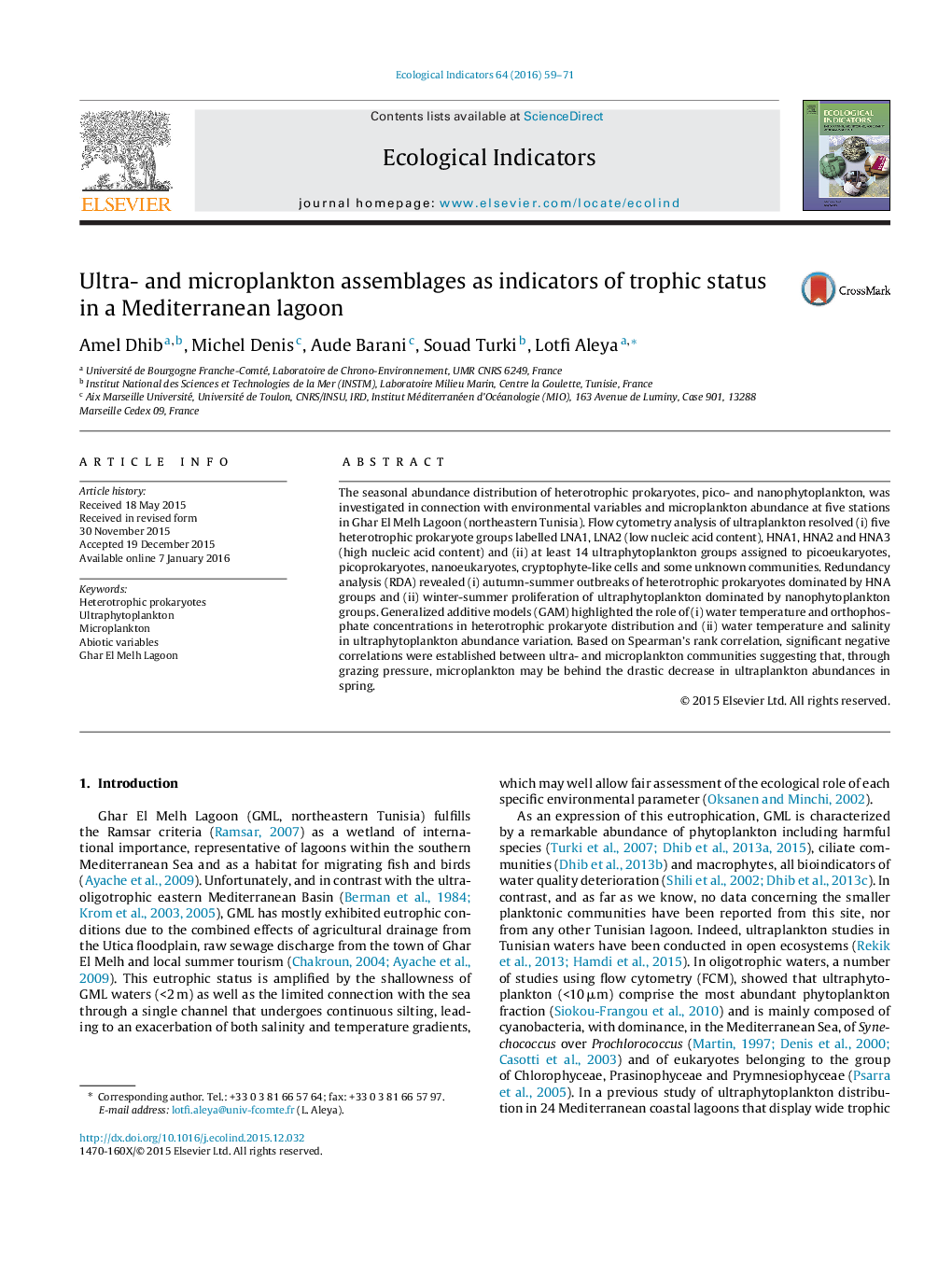| Article ID | Journal | Published Year | Pages | File Type |
|---|---|---|---|---|
| 4372937 | Ecological Indicators | 2016 | 13 Pages |
•Heterotrophic prokaryotes and ultraphytoplankton communities in a lagoon.•High ultraplankton diversity with dominance of HNA and nanophytoplankton.•Distribution of ultraplankton linked to abiotic and biotic variables.•How ultraplankton shapes its ecological response to specific niche properties.
The seasonal abundance distribution of heterotrophic prokaryotes, pico- and nanophytoplankton, was investigated in connection with environmental variables and microplankton abundance at five stations in Ghar El Melh Lagoon (northeastern Tunisia). Flow cytometry analysis of ultraplankton resolved (i) five heterotrophic prokaryote groups labelled LNA1, LNA2 (low nucleic acid content), HNA1, HNA2 and HNA3 (high nucleic acid content) and (ii) at least 14 ultraphytoplankton groups assigned to picoeukaryotes, picoprokaryotes, nanoeukaryotes, cryptophyte-like cells and some unknown communities. Redundancy analysis (RDA) revealed (i) autumn-summer outbreaks of heterotrophic prokaryotes dominated by HNA groups and (ii) winter-summer proliferation of ultraphytoplankton dominated by nanophytoplankton groups. Generalized additive models (GAM) highlighted the role of (i) water temperature and orthophosphate concentrations in heterotrophic prokaryote distribution and (ii) water temperature and salinity in ultraphytoplankton abundance variation. Based on Spearman's rank correlation, significant negative correlations were established between ultra- and microplankton communities suggesting that, through grazing pressure, microplankton may be behind the drastic decrease in ultraplankton abundances in spring.
